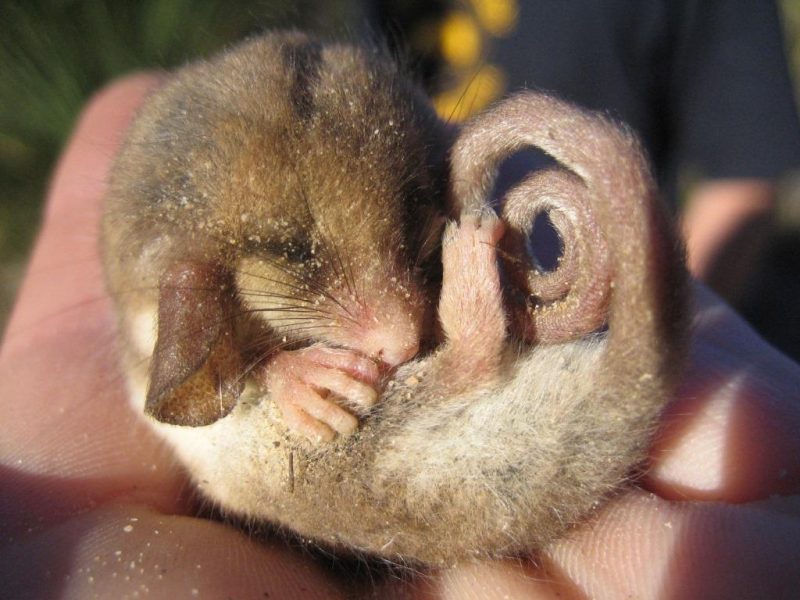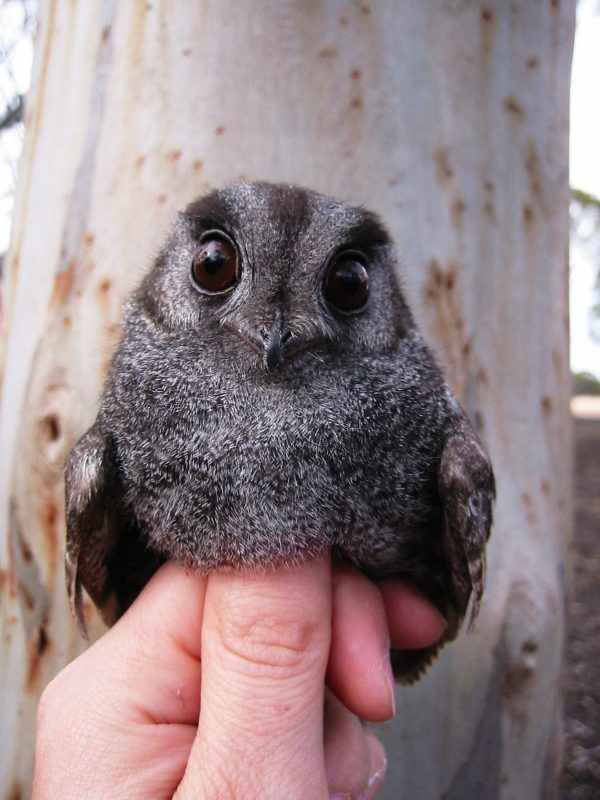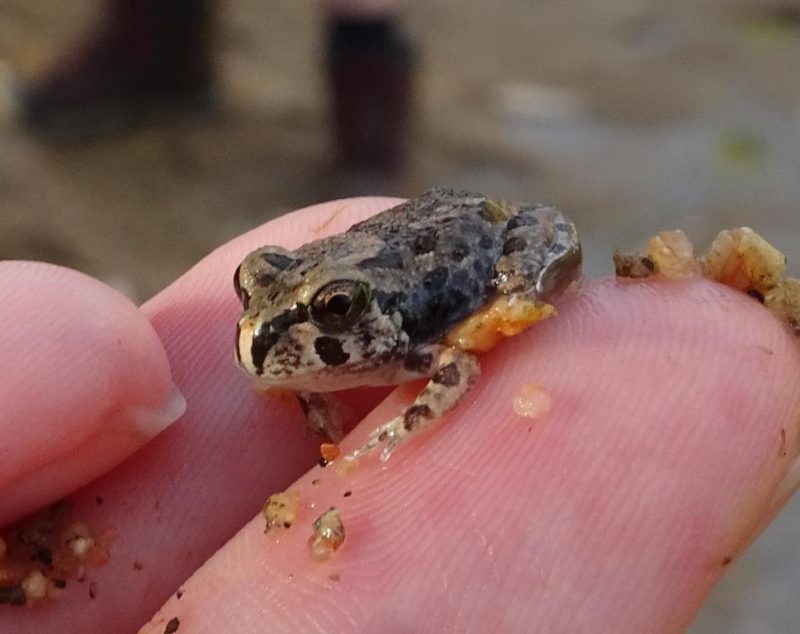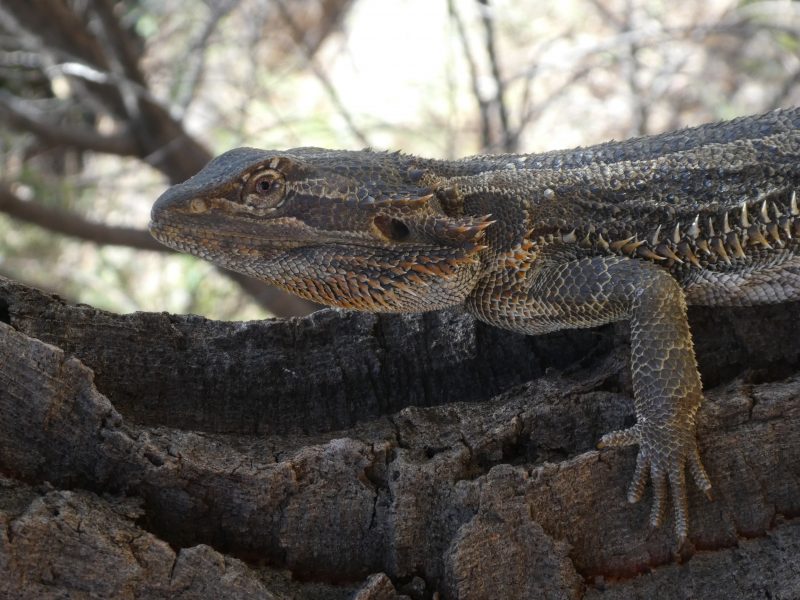
By Caragh Heenan
I was talking recently to a Land for Wildlife member about why there aren’t any reptiles around in the cooler weather and this sparked the thought that while most of us know about the fact that reptiles are cold-blooded and therefore may slow down in winter, not many people know about the term brumation. Furthermore, anyone that grew up watching American-centric cartoons will know about hibernation – but what about the native animals in Australia? Did you know that there are several species that use a physiological dormancy known as torpor?
I’ll give you a run down here on the various types of dormancy in animals. I am, afterall, an adept practitioner of winter lethargy and therefore feel that I have some authority on how it works (plus, my PhD was focused on energy expenditure in birds during reproductive phases, including the use of torpor).
Torpor
Torpor is when an endothermic (warm-blooded) animal goes into a period of physiological inactivity, usually resulting from a reduction in the body temperature of the animal and an altered metabolic rate. Torpor in Australian animals usually lasts less than 24 hours, known as daily torpor. Birds such as the Australian Owlet-nightjar (Aegotheles cristatus) undergo daily torpor and so does the Western Pygmy Possum (Cercartetus concinnus) in southern Australia (among other species). Several small Mammals, Bats, and Rodents also use daily torpor. Daily torpor is where the animal will function normally during the day, maintaining a normal body temperature and activity levels, but will drop their body temperature at night time in a controlled manner to conserve energy (through a reduced metabolic rate). Torpor is not seasonally dependent and therefore can take place at any time of the year.
Torpor is beneficial to an animal for many reasons, but largely seems to have evolved to help animals survive during periods of cold ambient temperature, enabling the animal to conserve energy. This is likely to have arisen in the evolutionary sense with the development of homeothermy (maintaining a stable body temperature above the ambient temperature), giving a fitness advantage over those who can’t modify their body temperature or who are more susceptible to extreme drops in temperature. Benefits of torpor include fat conservation (especially in migrating birds) and the ability to weather unpredictable food resources (especially to cope with the high energy-use period of reproduction).
Bouts of arousal can be energetically expensive, but can be necessary for the animal to feed and consume water before descending into another period of inactivity. It can also be important to arouse from torpor periodically to reinvigorate the immune system and prevent the animal from succumbing to parasites or diseases.

Hibernation
Seasonal (rather than daily) periods of inactivity are often made up of multiple bouts of torpor and is known as hibernation if it takes place during winter. There aren’t any Australian species that technically hibernate, as most go through extended periods of daily torpor.
Hibernation is driven by day length and hormone changes, as opposed to torpor which is driven by ambient temperature and food availability. A hibernator can spend periods of time (days to weeks) at a low body temperature. Mammals that hibernate generally don’t eat or drink during this period of dormancy, therefore will store up fat reserves before entering a period of hibernation to ensure that it has the resources to cope.
Furthermore, there is true hibernation and false hibernation. True hibernators are unresponsive to sound or touch and other outside influences. False hibernators, on the other hand, can be roused easily from their dormancy. The Bear, for an international example, is a false hibernator (therefore crushing all my pre-conceived knowledge from those aforementioned childhood cartoons).
Aestivation
Periods of inactivity during summer are called aestivation, and this is usually a way to avoid periods of high temperature, rather than low temperature. Aestivation is used by frogs in the Family Limnodynastidae (the Australian ground frogs) that we have here in central Australia, such as Spencer’s Burrowing Frog (Platyplectrum spenceri). They burrow down after the puddles dry and become inactive in deep, cool, moist sand waiting for the next big rain, when they can become active and breed. Therefore they are generally active around November to February if there has been rain. Another species that uses aestivation is the Echidna (species in the family Tachyglossidae), burrowing down before summer and becoming active just before winter to breed.

Brumation
Brumation is a type of dormancy seen in reptiles. The rationale for using the word brumation, instead of torpor, is that unlike endotherms that use torpor (who have a reduced body temperature during dormancy), reptiles do not have a changed physiological state with respect to temperature. They are already ectothermic (cold-blood), which means that they cannot alter their body temperature, and therefore become inactive by reducing their rate of breathing. In addition, unlike animals that go into torpor who are generally unresponsive during their period of dormancy, reptiles can be responsive and arouse periodically.

Diapause
While torpor and brumation relate to an inactivity status of an animal that allows it to escape harsh environmental conditions, diapause is where the development of an individual is suspended. Diapause is seasonally independent and is seen in insects most commonly, but can occur in other animal groups (such as embryonic diapause in Kangaroos… but that’s a whole new story!). This is why insect abundance and rapid growth is so often seen in conjunction with massive shifts in the weather.
~ Caragh Heenan
Categories:
Amphibians, Bats, Biodiversity, Invertebrates, Mammals, Native Fauna, Physiology, Reptiles